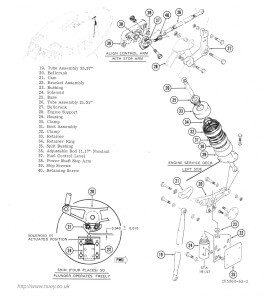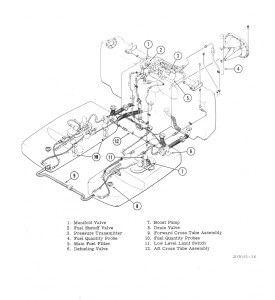Yo-yo? Pendulum? Nope.
What a beautiful Antarctic summer day! Just at VFR mins and 10 knots of wind for a little extra power in a hover. For an explanation of why wind is good for hovering helos, see http://www.copters.com/helo_aero.html and read Hovering, Ground Effect, and Translational Lift. Or you could just take my word for it. Should be an easy day. All our well qualified Bell 212 pilot has to do is move some platforms on a long line.
He launches to the site where his external loads are positioned for the move. No doubt, he takes the time to do a preflight on the cargo hook and 100 foot line he will use for the move. One would hope he also either inspects or was fully briefed on his loads. There are multiple platforms measuring 20 feet by 14 feet and weighing 1250 pounds.
For the benefit of the non-rotary readers, allow me to say a few words about moving external loads. Three miles visibility over ice covered terrain also is unlikely to give you much in the way of reference points to maintain attitude or a stable hover position. The higher you hover, the more difficult it is to pick up any drift or judge your ground speed and this aircraft will be 100 feet up before the load is off the ground, good visual reference or not. Wait, there’s more. . .
I do not have any long line experience, but I have moved a bunch of stuff under helos. Especially with single point attachment, the load swings like a pendulum. Think about how a yo-yo swings on the end of the string when you move your hand. Also consider, the longer the line, the greater the swing of the object on the bottom. Do you see what’s coming?
Finally, loads outside the helicopter are affected by airflow, just like anything else. Now, consider the feel of putting your hand out the window of a moving car. A fist in the airstream is basically pushed back by the force of the air. If, instead, an open hand is stuck out there, it wants to fly. Look back at the dimensions of the platforms. Those things are going to fly at any speed above barely moving. No mention in the report of the distance the loads are to be moved.
Summer days this far south are long, but who wants spend any more time in the cold than necessary? Time to get started. The Bell launches and final checks are done before coming in for the first pick up. After hook up, the aircraft starts to climb almost straight up with other movement only to center the helo over the load. The first platform is gently lifted off the ground. Weather, the length of the line, and the weight of the load conspire against our pilot and he starts forward just a little too aggressively. Think back to the yo-yo. He struggles with the load swinging for the entire move, however long it is.
Back for the second load. He is more gentle as he transitions to forward flight this time, but the last move took forever so he chooses to fly a little faster. What happens when you stick your open hand out the window of a moving car? This time, the load starts to fly. Slowing down helps and the second move is successful.
Back for number 3. Will the third time be the charm? Load is clear of the ground. Nice gentle transition. This one is riding much better until a gust of wind causes it to fly for a moment and the load jumps, causing a jerk and swing on the line. At this point, something really heavy is doing a dance on a string below the aircraft. After a scary moment or two, the load calms down and is safely delivered. Whew! Our pilot wisely decides to check the Bell for damage and finds none.
Time for load number 4. Up it goes. Transition to forward flight is normal and the 212 climbs to 200 feet above ground level (AGL). Normal flight ends right about then. The load begins to fly. The platform swings once . . . twice, pulling the helo at each extreme of motion. Wind, elasticity in the long line, attempts to correct . . . Whatever the cause, the load jumped and jerked down hard, breaking the platform in half. At the same time, both engines lost power. A witness will later report white mist coming from the aircraft. The load was jettisoned and the helicopter impacted a frozen lake. While helos can land safely without power using autorotation, this requires some forward airspeed and there was probably little to none in this situation.
Bell 212 N1079U crashed January 17, 2003 at McMurdo Station. The aircraft was substantially damaged and 2 were seriously hurt.

H-1 family fuel control rod assembly. In the upper left inset, not the bottom end of the assembly is nestled in among the fuel system components.
The Brief of Accident indicates the unstable load damaged the cargo hook, which pulled the fuel crossover lines out of the fuel tanks and pushed them against the throttle bell cranks. (See diagrams above.) In turn, this moved the throttles to idle on both engines.
How do your ensure your cargo is safely transported inside or outside the aircraft?
Findings in Brief of Accident ANC03GA023:
- Occurrence #1: Cargo shift
- (Cause) Excessive airspeed
- (Factor) External load oscillation
- Occurrence #2: Total loss of engine power
- 2 Engines
- (Cause) External load cable/hook sheared
- (Factor) Fuel system line separation
- (Cause) Throttle bellcrank bumped
- (Cause) Fuel switched off
- Occurrence #3: Forced Landing
- Occurrence #4: IN FLIGHT COLLISION WITH TERRAIN/WATER
- Terrain – Frozen water
—————————————————————
Brief of Accident ANC03GA023
Search for “ANC03GA023″ in the accident number filed at
http://www.ntsb.gov/aviationquery/index.aspx
System diagrams provided by http://huey.co.uk

